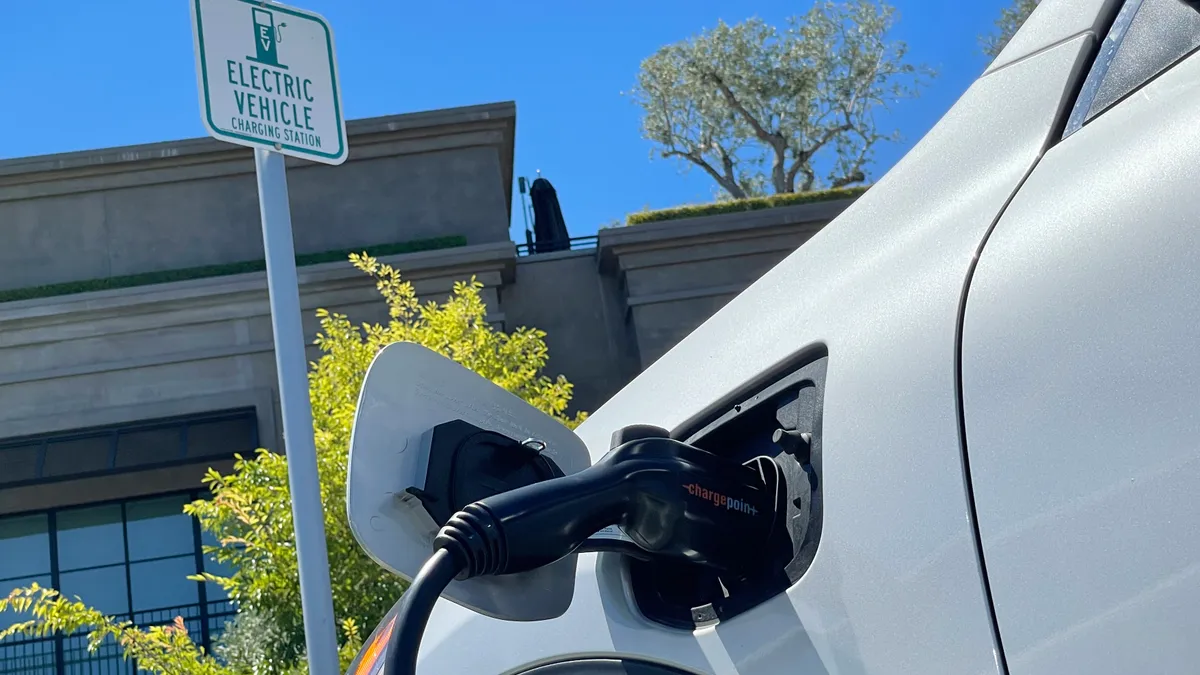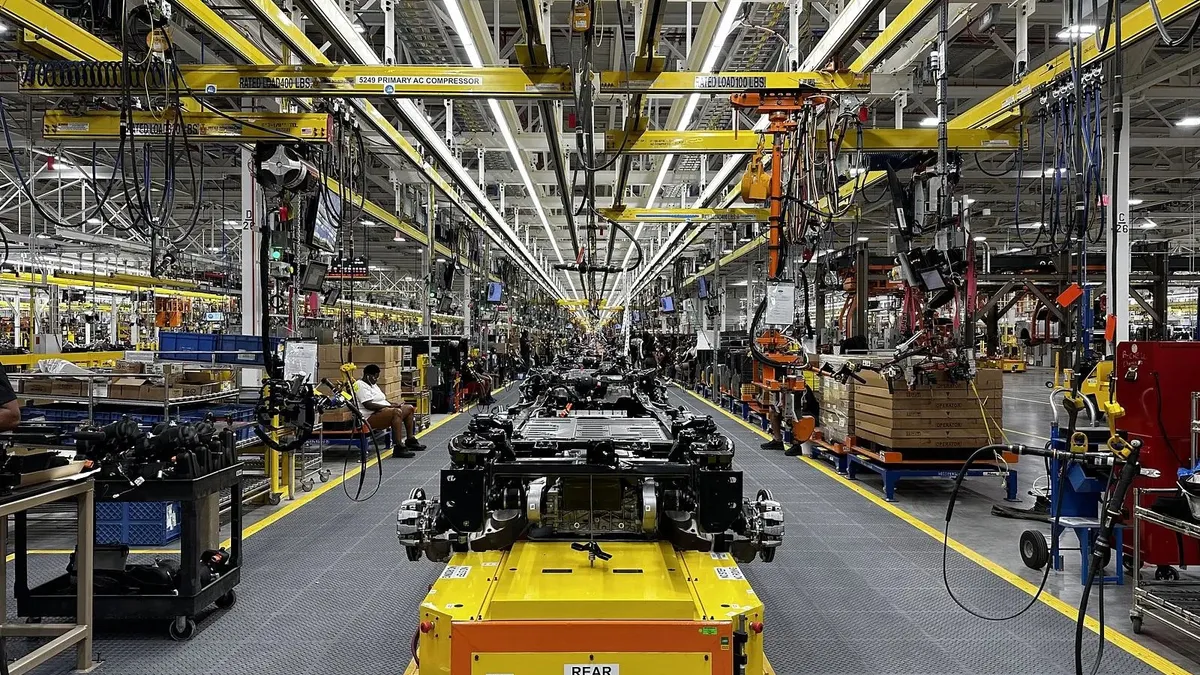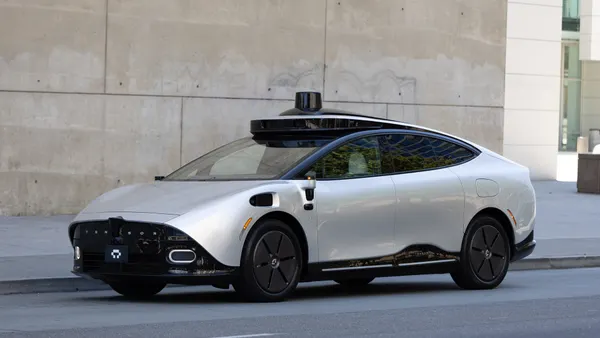Dive Brief:
- The electric vehicle fleet is growing quickly, with more than 100 million electric passenger vehicles on the road by 2026, up from 27 million at the end of 2022, according to BloombergNEF’s annual Long-Term Electric Vehicle Outlook.
- The report predicts there could be as many as 700 million EVs on roads globally by 2040.
- High costs and a lack of charging infrastructure could slow EV adoption, the report says.
Dive Insight:
The transition to electrification could lead to significant economic opportunities for automakers as BNEF predicts the total cumulative value of EV sales across all segments could reach $8.8 trillion by 2030 and $57 trillion by 2050, according to its base-case scenario.
Global EV sales are predicted to rise significantly from 10.5 million vehicles in 2022 to 22 million units in 2025, accounting for 26% of the market. By 2040, EVs are expected to account for 75% of the market.
EV adoption rates will vary by country, according to BNEF, with Denmark, Sweden, Norway, China, Germany, South Korea, France and the U.K. leading the global markets. In the U.S., EVs will make up nearly 28% of passenger vehicle sales by 2026, up from 7.6% in 2022, because of investments from the Inflation Reduction Act.
While EV sales are growing, the report points to several hurdles that could slow the momentum, including battery costs and infrastructure.
Global demand for raw materials such as lithium, nickel and cobalt could increase by 50% by 2030, according to BNEF, making the development of alternative battery chemistries essential.
BNEF urges that governments support research into next-generation battery technologies, including sodium-ion batteries, to reduce dependency on critical raw materials and lower battery production costs. Sodium-ion batteries could reduce global lithium demand by nearly 40% by 2035, the report says.
For the current EV batteries that use these crucial raw materials, a more streamlined mining permitting process could help boost the supply chain to reduce costs for battery producers and help make EVs more affordable.
New, more efficient batteries can increase EV adoption by boosting their range. While the average range of EVs sold in the U.S. was 291 miles in 2022, according to the report, automakers could sell more vehicles if they increased range to alleviate driver concerns about running out of power. The report also suggests increasing public charging infrastructure would help address these concerns.
Tesla, however, may be changing the game. Over the last few weeks, the company agreed to open up its charging network to rivals, including GM and Ford, giving both automakers access to more than 12,000 additional chargers. Tesla’s Superchargers support higher charging currents compared with the Combined Charging System, allowing drivers of GM and Ford EVs to charge their vehicles much quicker.
Beginning in 2024, Ford will provide its current EV customers with an adapter for charging at Tesla Superchargers. The automaker plans to switch to the NACS charging port for its future EVs.














